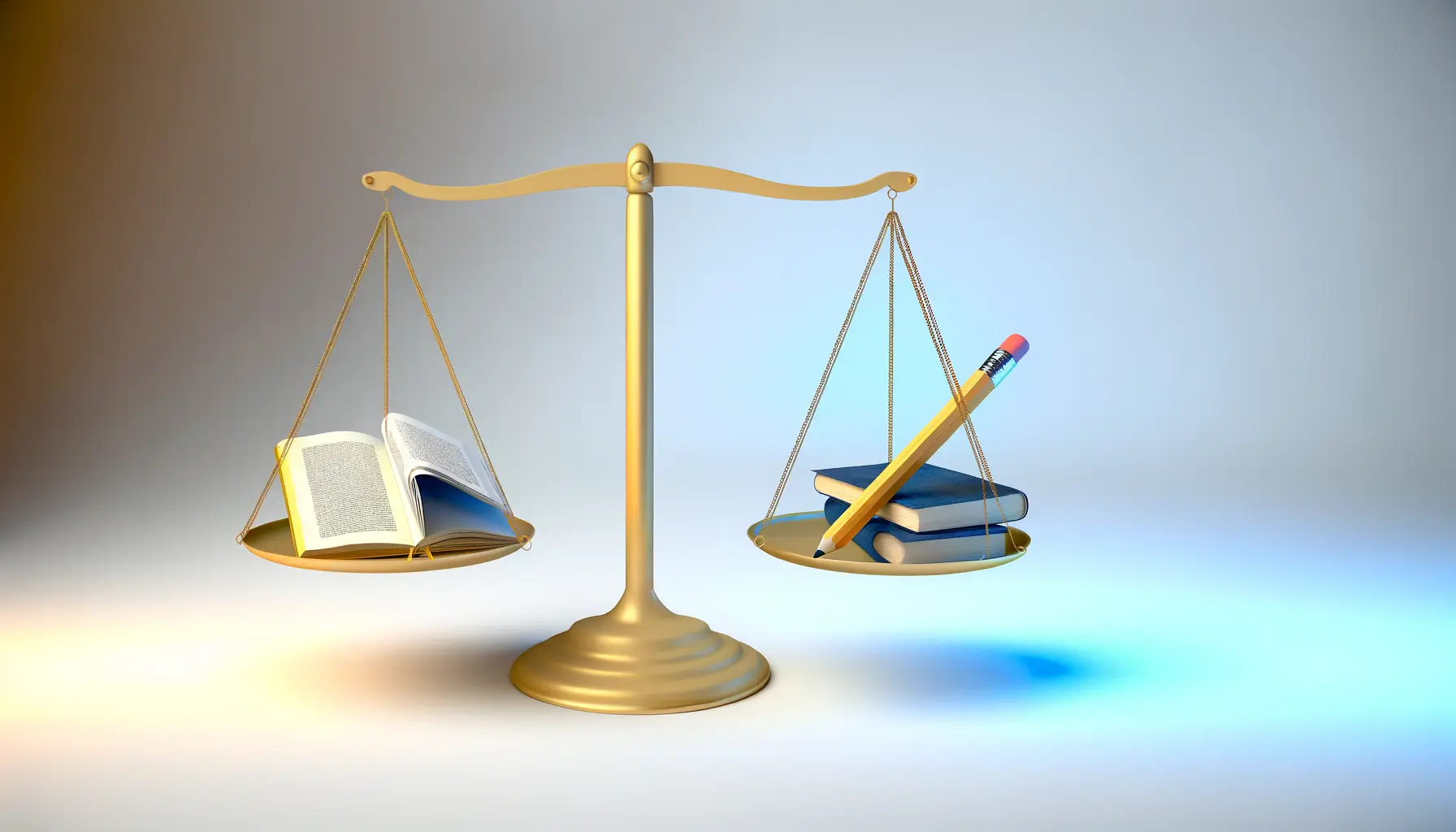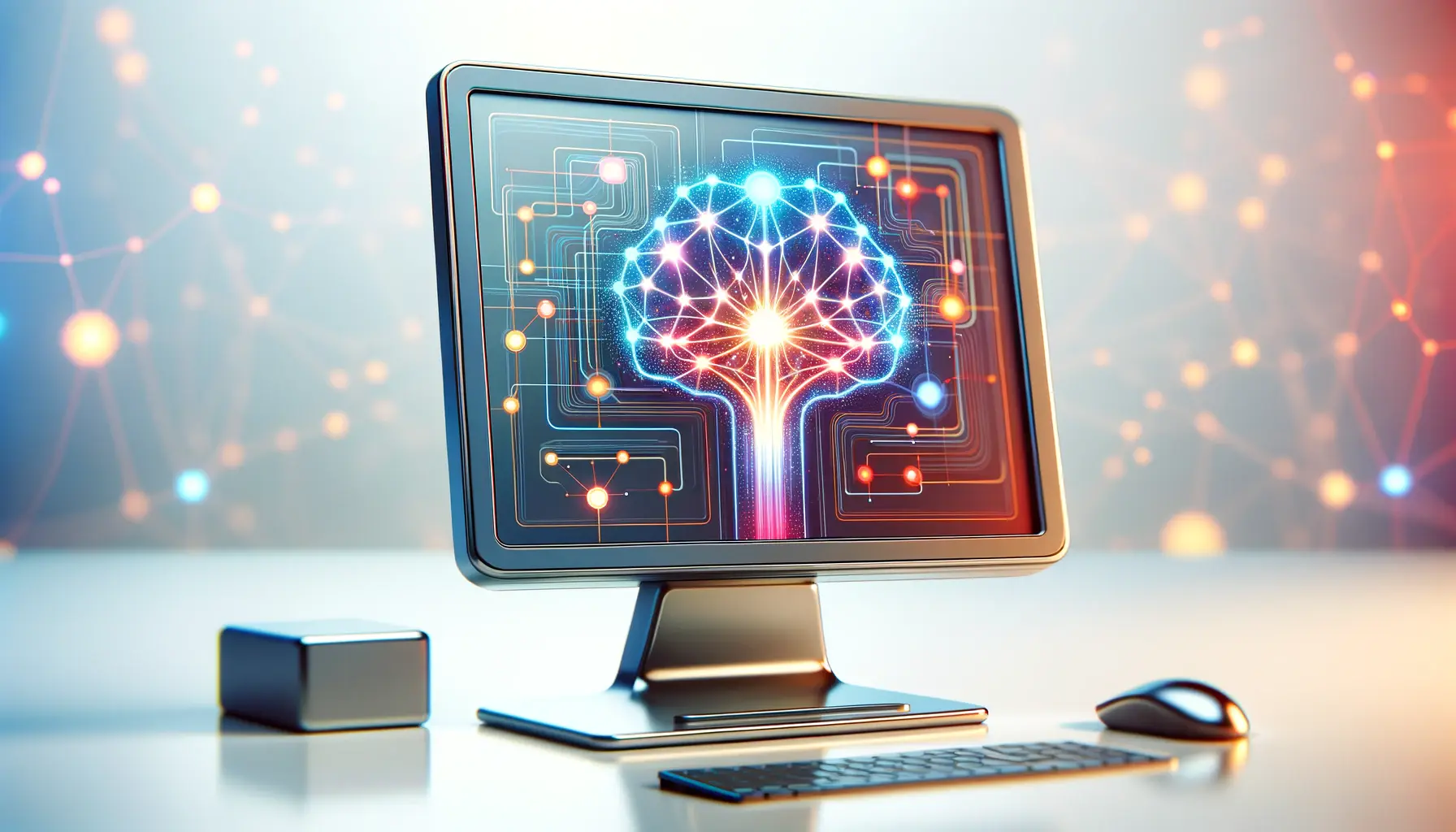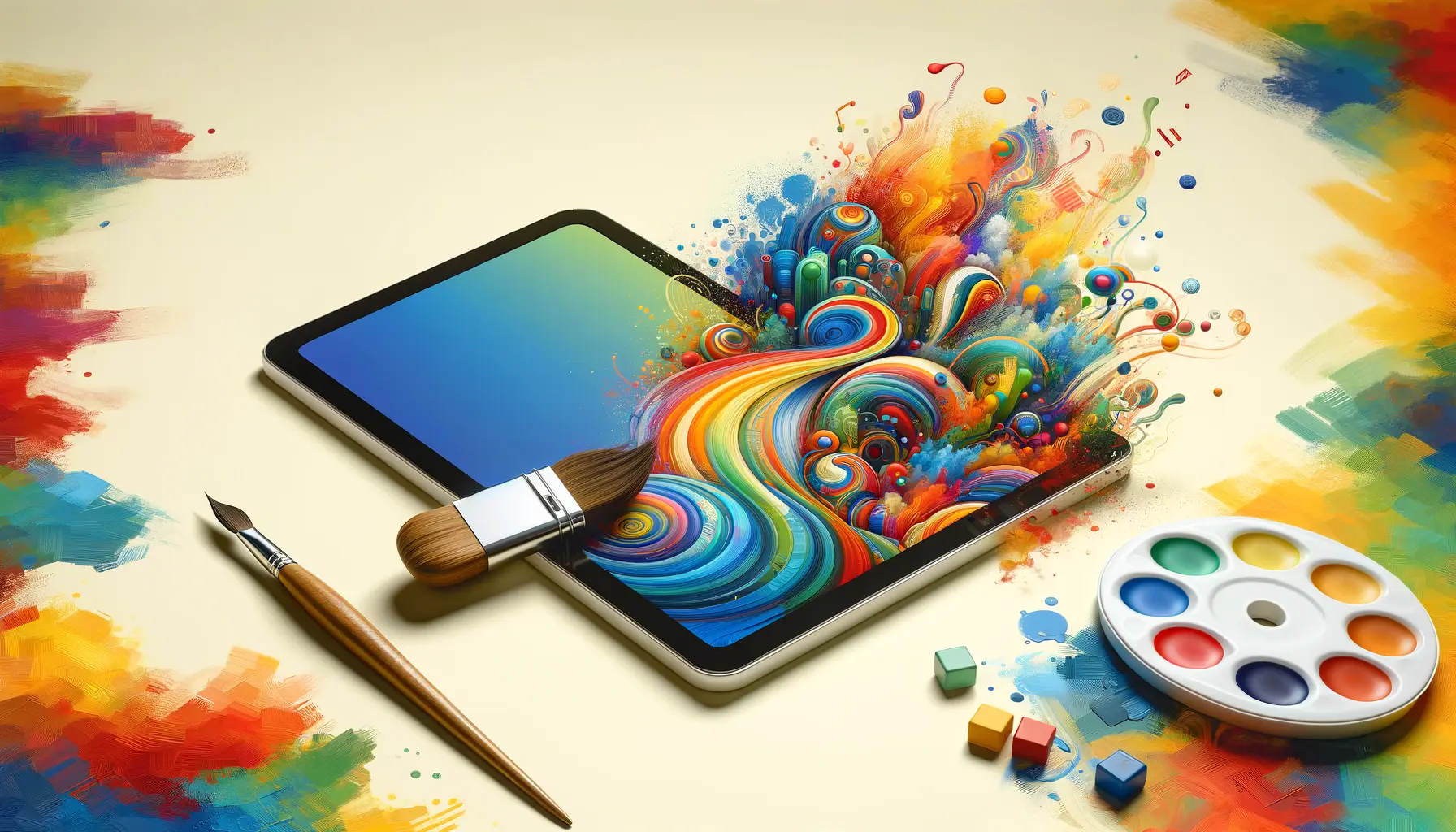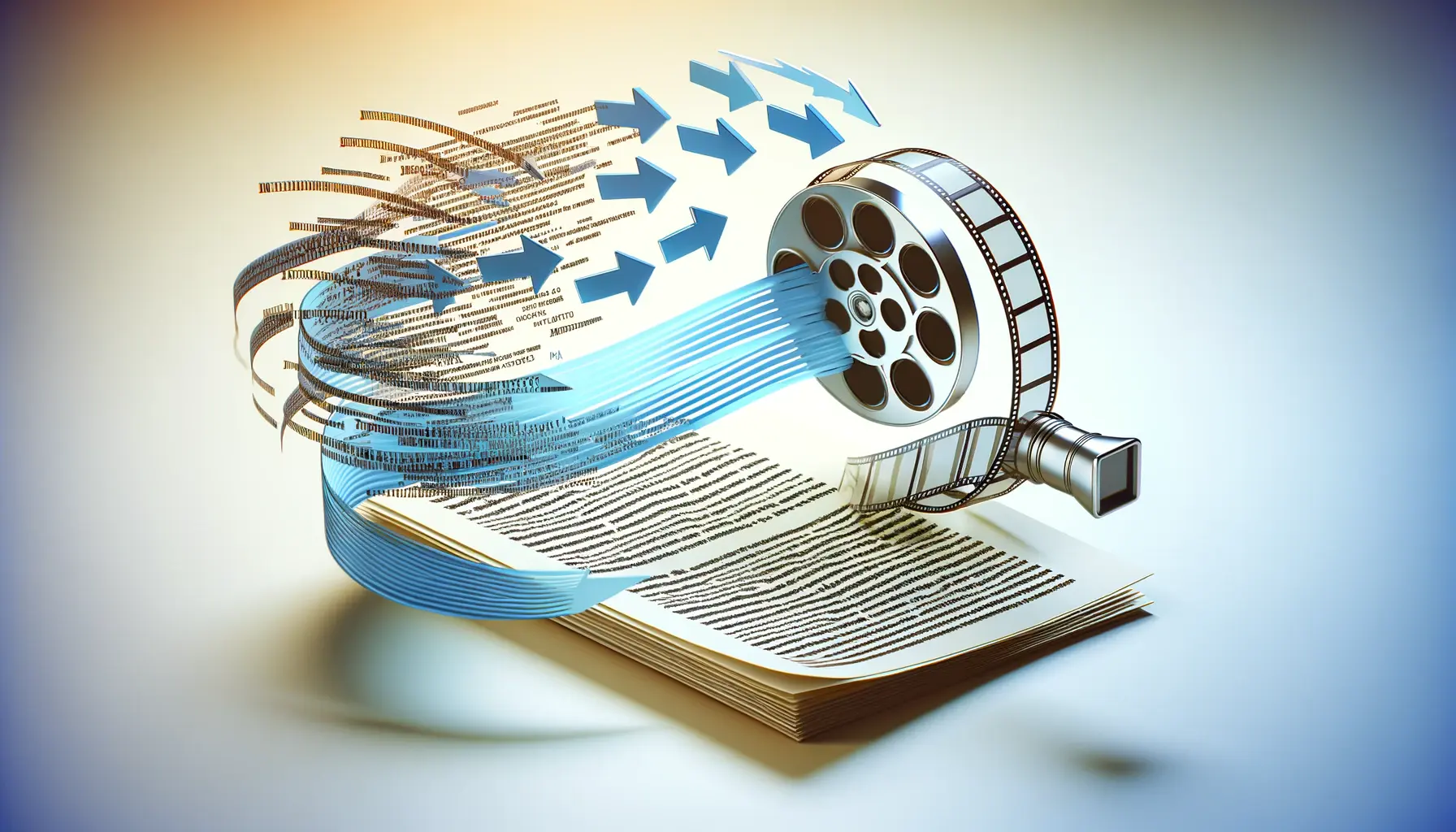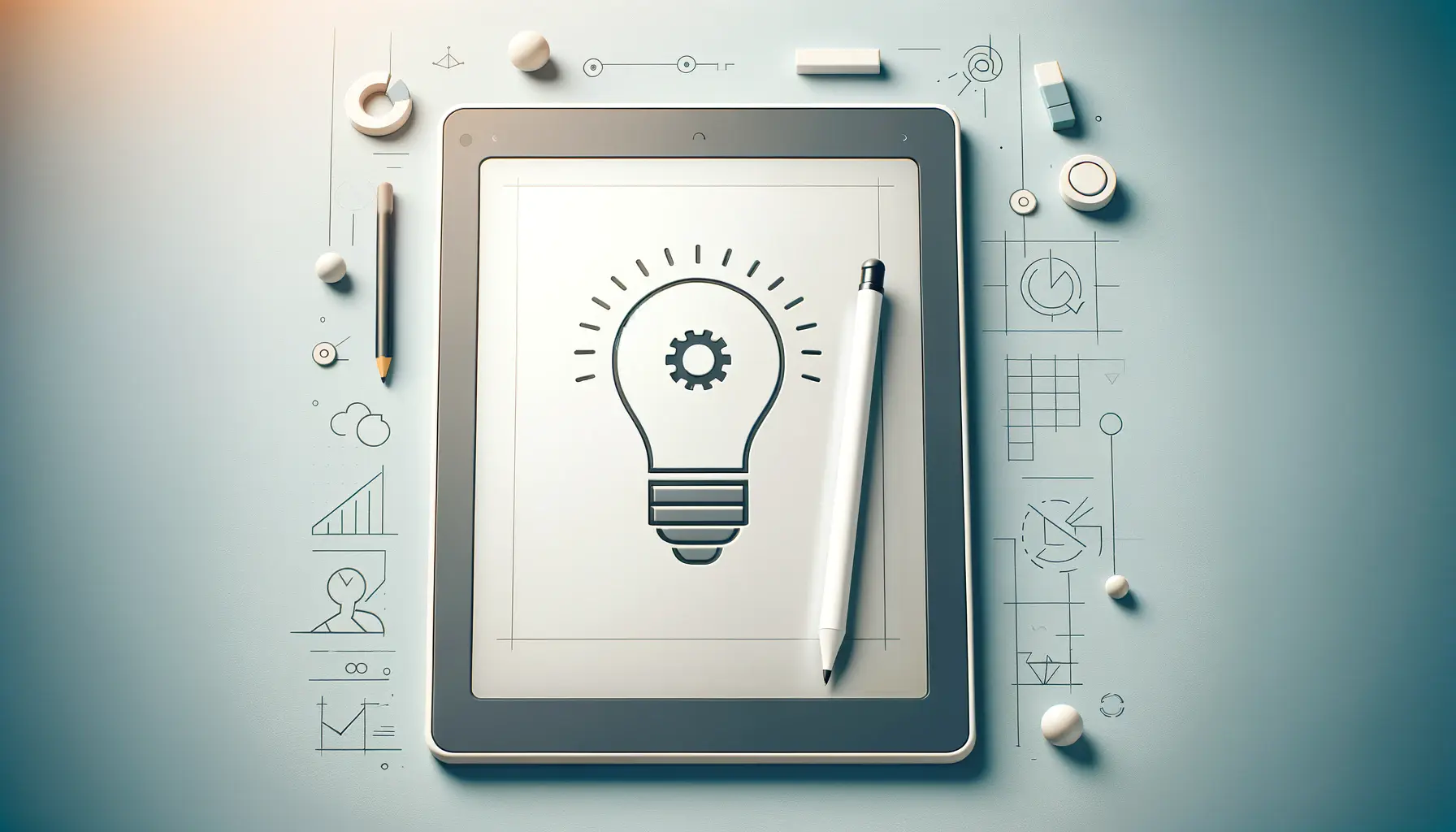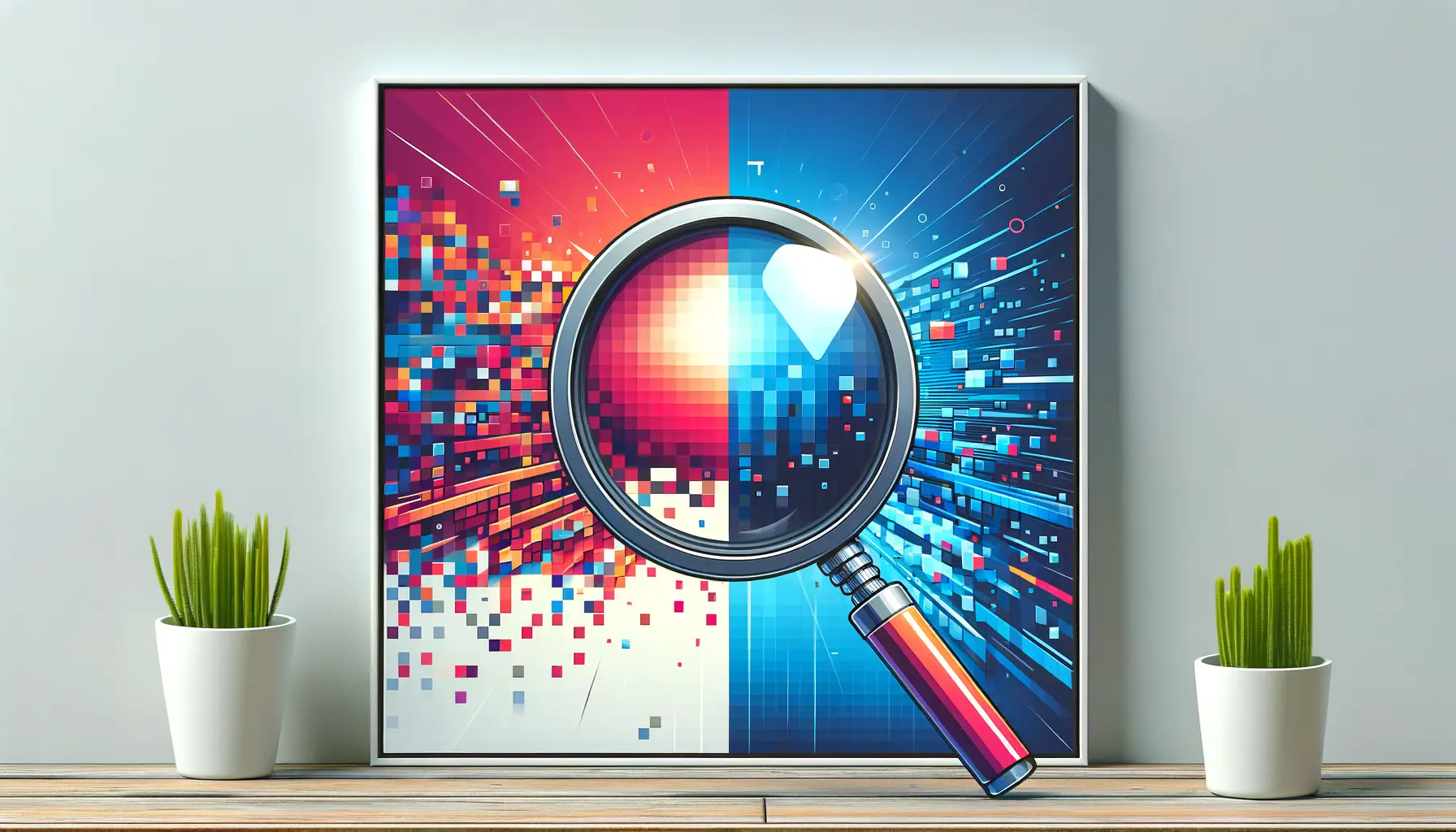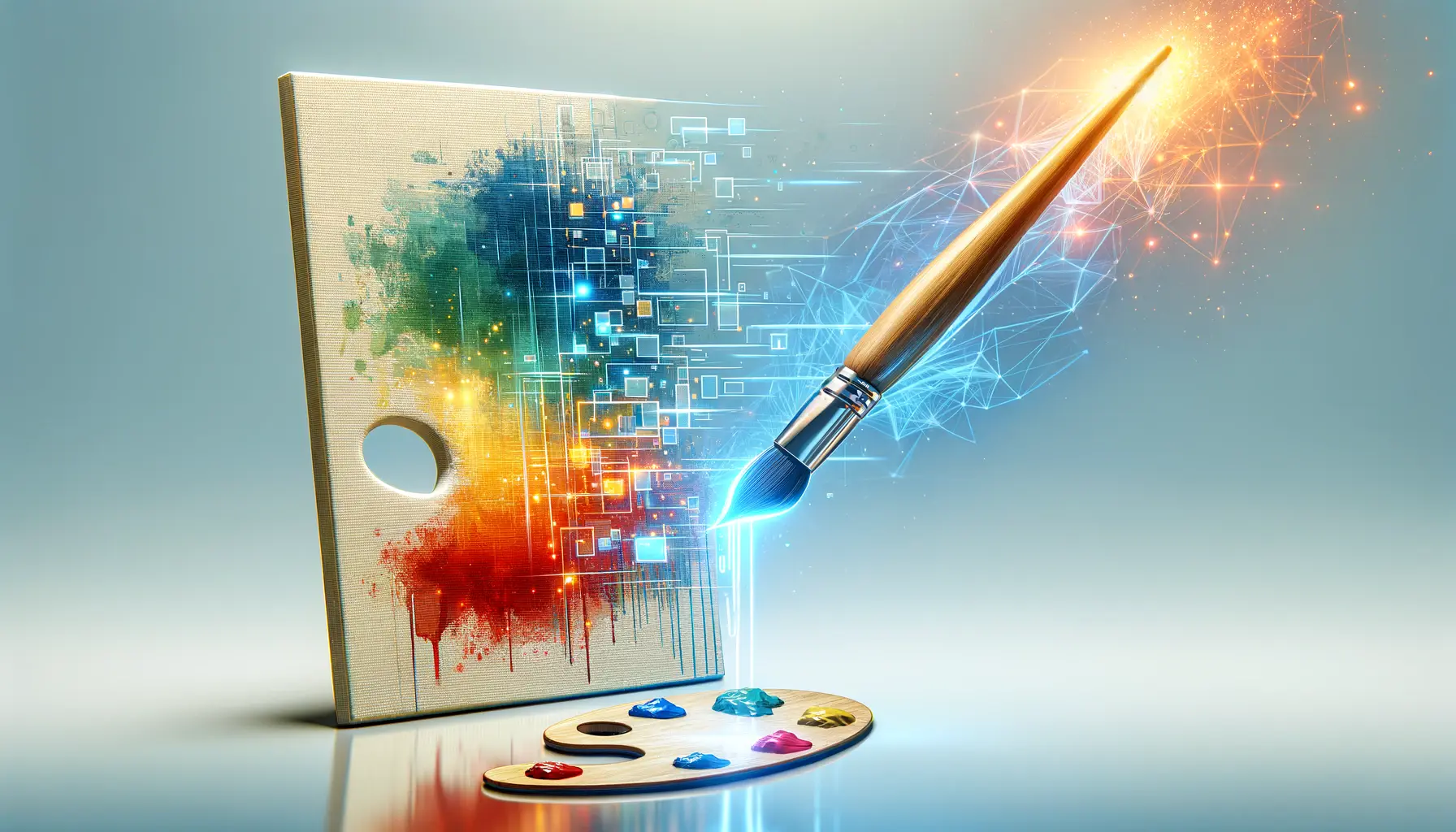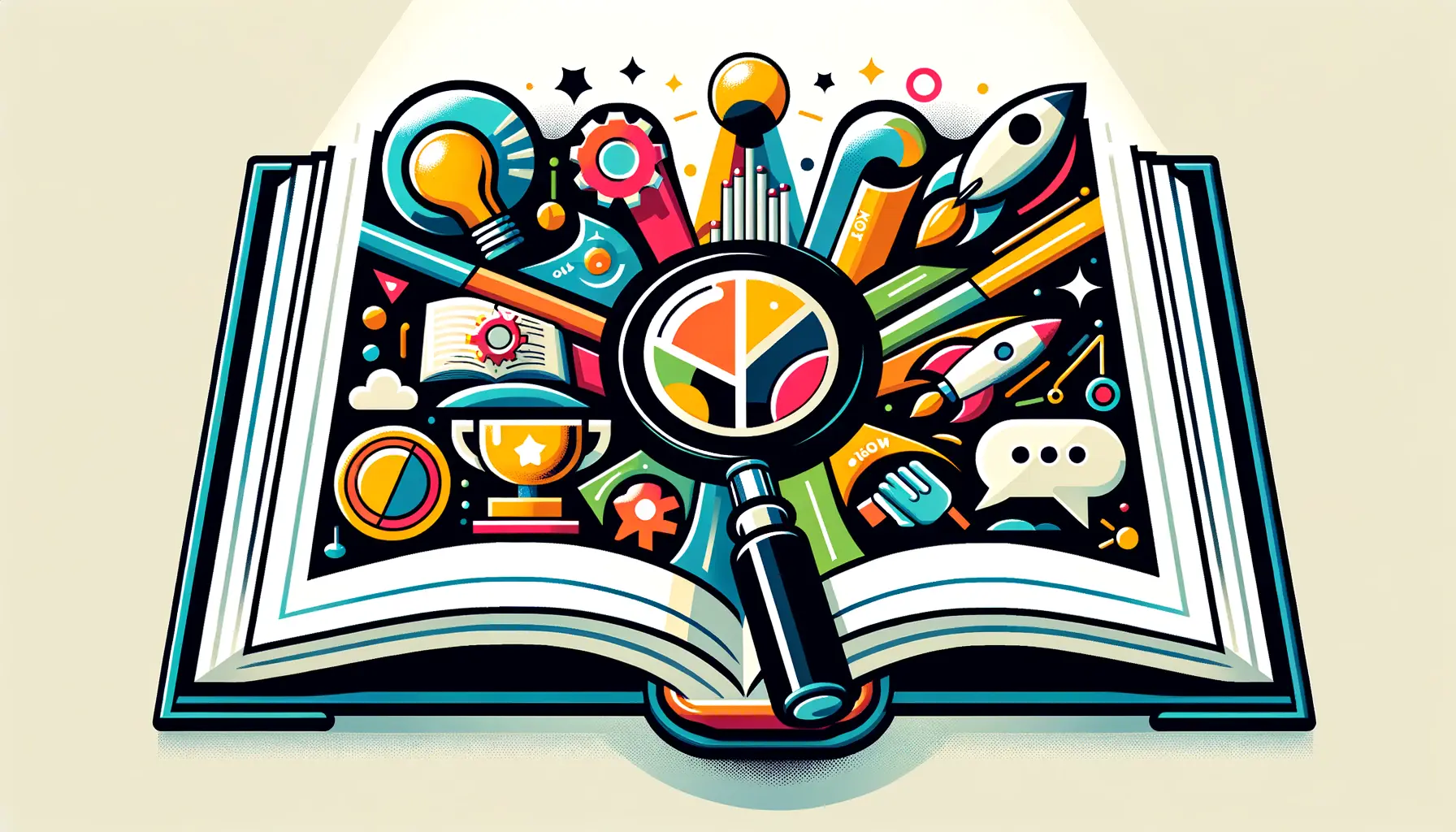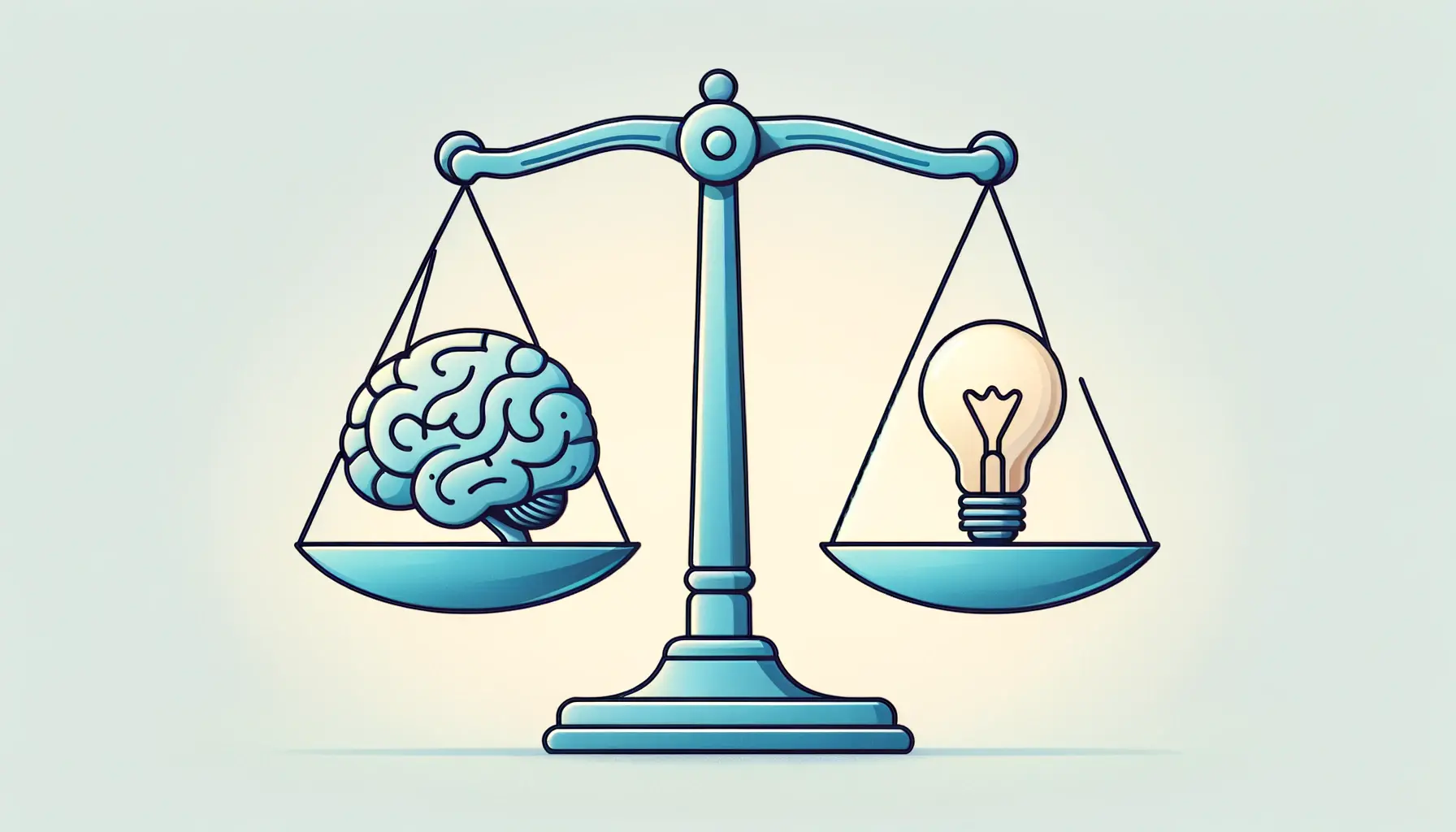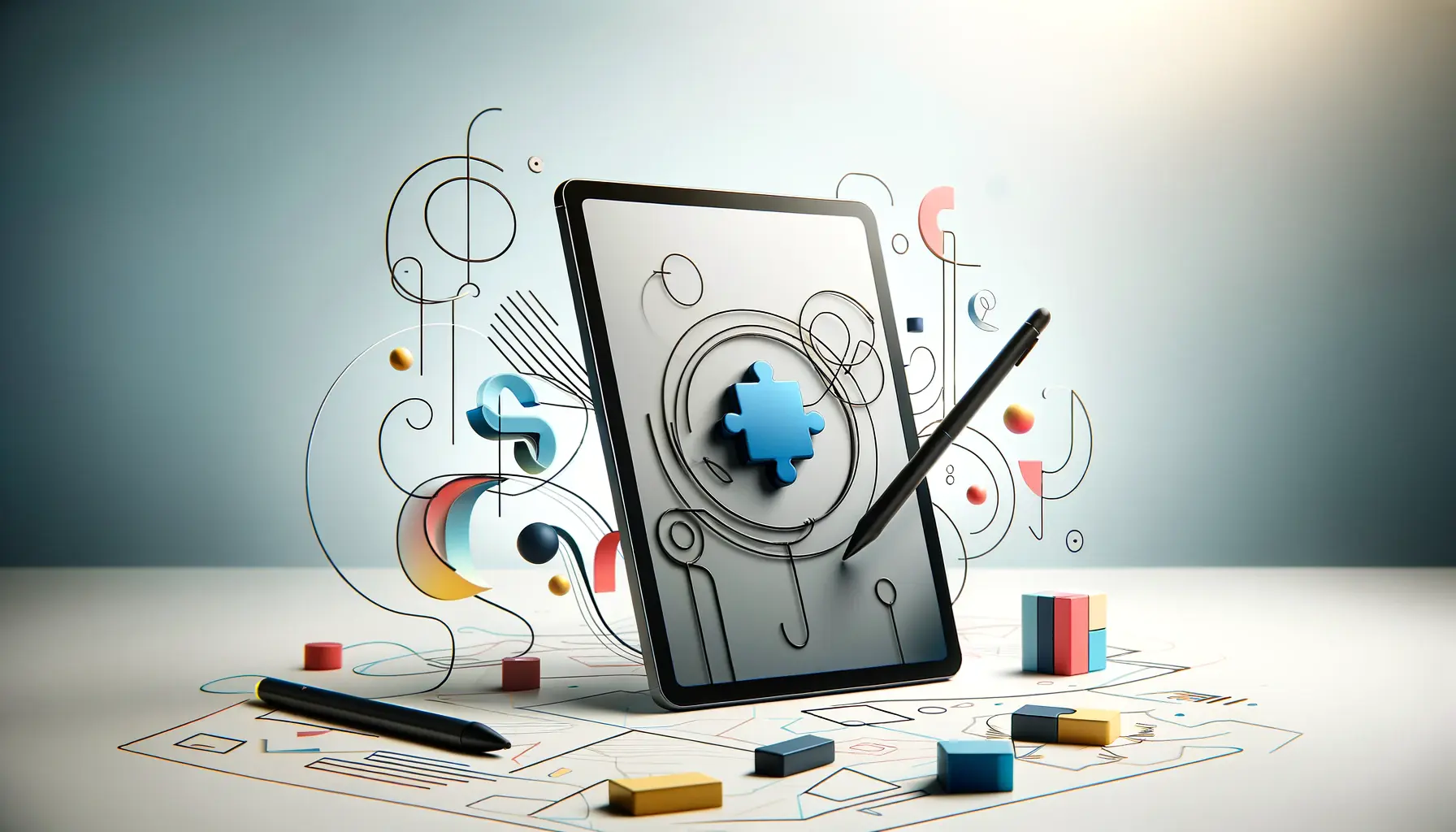In the realm of digital creativity, a transforms technology has emerged, reshaping the landscape of visual art and design.
This transformative tool, known as DALL-E, has become a cornerstone in the digital art community, offering unprecedented capabilities in generating images from textual descriptions.
Its impact on artists, designers, and creatives across the globe is profound, marking a new era in the exploration of artificial intelligence’s role in art.
DALL-E, a portmanteau of the famous surrealist artist Salvador Dalí and Pixar’s adorable robot WALL-E, is not just a tool but a harbinger of change.
It represents the fusion of technology and creativity, where the boundaries of imagination are expanded by the limitless possibilities of AI.
This technology has not only democratized art creation but also introduced a new paradigm where the lines between creator and creation blur, leading to a renaissance in digital artwork that is both inclusive and innovative.
- The Genesis of DALL-E
- Expanding the Creative Horizon
- The Ethical and Cultural Implications
- Technological Underpinnings and Future Transforms
- Integrating DALL-E into Educational Programs
- Challenges and Considerations in AI Art
- Community and Collaboration in the AI Art Ecosystem
- Embracing the Future of Art with DALL-E
- DALL-E Digital Artwork FAQs
The Genesis of DALL-E
The inception of DALL-E by OpenAI marks a significant milestone in the field of artificial intelligence.
Designed to understand and interpret textual prompts, DALL-E generates images that are rich in detail, creativity, and relevance.
This capability stems from its advanced neural network architecture, which has been trained on a diverse dataset of images and their corresponding descriptions.
The result is a tool that can produce complex, nuanced, and often surprising visual outputs from simple text inputs.
One of the most compelling aspects of DALL-E is its ability to bridge the gap between conceptualization and visualization.
Artists and designers often face the challenge of accurately translating their visions into tangible forms.
DALL-E mitigates this challenge by providing a platform where ideas can be directly converted into visual representations, thereby enhancing the creative process and enabling a more fluid expression of thoughts and concepts.
Understanding DALL-E’s Capabilities
DALL-E’s prowess lies in its versatility and depth of understanding.
It can interpret abstract concepts, recognize relationships between objects, and apply artistic styles to generate images that are both meaningful and aesthetically pleasing.
Whether it’s creating surreal landscapes, reimagining historical events, or visualizing futuristic inventions, DALL-E’s outputs are often indistinguishable from human-created art.
Moreover, DALL-E’s ability to perform tasks such as outpainting and inpainting—extending images beyond their original borders or altering specific elements within them—further underscores its potential as a creative tool.
These features not only allow for the enhancement of existing artworks but also open up new avenues for storytelling and conceptual art, where the narrative can be visually expanded in novel and unexpected ways.
DALL-E transforms digital artwork by enabling the direct translation of textual ideas into complex visual representations, fostering a new wave of creativity and innovation in the digital art world.
Expanding the Creative Horizon
The advent of DALL-E has not only revolutionized the way we create art but also expanded the creative horizon for professionals and amateurs alike.
By breaking down the technical barriers to art creation, DALL-E has opened up a world of possibilities for those who may not have traditional artistic skills but possess a vivid imagination and creative ideas.
This democratization of art creation is pivotal in fostering a more inclusive art community.
It encourages a diverse range of voices and perspectives to contribute to the visual arts, enriching the cultural tapestry with new stories, visions, and expressions that were previously untapped.
Facilitating Creative Experimentation
One of DALL-E’s most significant contributions to the digital art world is its role in facilitating creative experimentation.
With DALL-E, artists and designers can quickly iterate on ideas, explore various artistic styles, and experiment with complex concepts without the constraints of time or resources.
This ease of exploration encourages a culture of innovation and experimentation within the art community, leading to the creation of unique and thought-provoking works.
- Artistic Styles Exploration: DALL-E allows users to experiment with a wide range of artistic styles, from classical to contemporary, enabling the creation of artworks that can traverse different eras and aesthetics.
- Conceptual Art Creation: By interpreting abstract concepts and ideas, DALL-E enables artists to push the boundaries of conceptual art, creating visuals that challenge perceptions and provoke thought.
- Visual Storytelling Enhancement: DALL-E’s capabilities in outpainting and inpainting offer new dimensions to visual storytelling, allowing narratives to be visually expanded in detailed and imaginative ways.
Impact on Professional Workflows
The integration of DALL-E into professional workflows has been transformative for many in the creative industry.
Graphic designers, illustrators, and concept artists have found DALL-E to be a valuable tool in streamlining the creative process, from ideation to execution.
It serves as a rapid prototyping tool that can generate visual concepts and assets, significantly reducing the time and effort required to bring ideas to life.
- Ideation and Concept Development: DALL-E accelerates the ideation process by providing instant visualizations of concepts, helping creatives refine their ideas and directions early in the project lifecycle.
- Visual Asset Creation: DALL-E can generate a variety of visual assets, from background scenes to character designs, aiding in the production of comprehensive visual projects with less reliance on manual creation.
- Enhancing Collaboration: By providing a common visual reference, DALL-E facilitates clearer communication and collaboration among creative teams, ensuring that everyone shares the same vision for the project.
The integration of AI tools like DALL-E in art creation represents a paradigm shift, offering both challenges and opportunities for the creative industry. It underscores the importance of embracing technology as a partner in the creative process, enhancing rather than replacing human creativity.
The Ethical and Cultural Implications
The rise of AI-driven tools like DALL-E in the realm of art and design brings with it a host of ethical and cultural implications that warrant careful consideration.
As these technologies become more integrated into our creative processes, they challenge our traditional notions of authorship, originality, and the value of art itself.
This shift prompts a reevaluation of the role of the artist in the age of AI and raises questions about the future of creativity.
Moreover, the accessibility of such powerful tools democratizes art creation but also introduces the potential for misuse, such as the creation of deceptive or harmful content.
As we navigate these waters, the art community, tech developers, and policymakers must work together to establish guidelines that foster innovation while protecting ethical standards and cultural integrity.
Navigating Authorship and Originality
The question of authorship is at the forefront of the ethical debate surrounding AI in art.
DALL-E’s ability to generate art based on textual prompts challenges the traditional concept of the artist as the sole creator.
This leads to complex discussions about the ownership of AI-generated art and the definition of originality in a world where machines can create.
- Defining Artistic Ownership: Establishing clear guidelines on the ownership of AI-generated artwork is crucial for protecting the rights of creators and ensuring fair recognition and compensation.
- Preserving Human Creativity: While DALL-E enhances the creative process, it is essential to value and preserve the unique qualities of human creativity, ensuring that AI serves as a tool rather than a replacement.
Addressing Potential Misuse
As with any powerful technology, there is the potential for misuse.
The ability of DALL-E to create realistic and convincing images raises concerns about the creation of deceptive content, deepfakes, or culturally insensitive material.
It is imperative to develop robust content moderation policies and ethical guidelines to mitigate these risks.
- Implementing Content Moderation: Developing advanced content moderation systems that can identify and prevent the creation of harmful or deceptive content is essential for responsible use.
- Promoting Cultural Sensitivity: Ensuring that AI-generated art respects cultural diversity and avoids perpetuating stereotypes or insensitive portrayals requires ongoing dialogue and education.
- Encouraging Ethical Use: Fostering a culture of ethical use among DALL-E users, through education and community guidelines, can help minimize the potential for misuse.
The ethical and cultural implications of AI in art underscore the need for a balanced approach that embraces the benefits of technology while addressing its challenges. By fostering dialogue and collaboration, we can navigate these complexities and ensure that AI serves to enrich our cultural landscape.
Technological Underpinnings and Future Transforms
The technological foundation of DALL-E is a testament to the rapid advancements in artificial intelligence and machine learning.
At its core, DALL-E operates on sophisticated algorithms and neural networks trained on vast datasets of images and text.
This training enables the AI to understand and interpret textual prompts, translating them into visually compelling artwork.
As we look to the future, the ongoing development of DALL-E and similar technologies promises to further blur the lines between human and machine creativity, opening up new frontiers in digital art and beyond.
Moreover, the evolution of DALL-E reflects a broader trend in AI research and development focused on enhancing creative expression.
Future iterations of DALL-E and its counterparts are likely to offer even greater capabilities, including more nuanced understanding of artistic styles, improved interpretation of complex prompts, and enhanced collaborative features that allow for deeper human-AI co-creation.
Advancements in AI Art Generation
The trajectory of AI in art generation is marked by continuous improvement and innovation.
As algorithms become more refined and datasets more comprehensive, the ability of AI to produce art that resonates on a human level will only increase.
Future advancements may include:
- Greater Contextual Awareness: Enhancements in AI’s understanding of context and nuance in textual prompts will lead to more accurate and relevant art generation.
- Interactive Art Creation: The development of interactive AI systems that can collaborate with human artists in real-time, offering suggestions and modifications, will enrich the creative process.
- Personalization and Customization: AI tools will become more adept at creating art tailored to individual preferences and styles, offering personalized creative experiences.
Implications for Creative Industries
The impact of DALL-E and similar AI technologies on the creative industries is profound.
As these tools become more accessible and integrated into professional workflows, they will transform how content is created, distributed, and consumed.
Potential implications include:
- Revolutionizing Design and Marketing: AI-generated visuals can significantly enhance advertising campaigns, product designs, and marketing materials, offering fresh and innovative ways to engage audiences.
- Transforming Entertainment: In the entertainment industry, AI can assist in creating complex visual effects, storyboarding, and even generating entire animated sequences, streamlining production processes.
- Enabling New Forms of Expression: AI opens up new avenues for artistic expression, allowing creators to explore uncharted territories of creativity and present their audiences with unprecedented visual experiences.
The technological advancements driving DALL-E and AI art generation are not just reshaping the landscape of digital art; they are setting the stage for a future where creativity and technology are inextricably linked, offering endless possibilities for innovation and expression.
Integrating DALL-E into Educational Programs
The integration of DALL-E into educational programs represents a significant leap forward in the way art and design are taught and learned.
By incorporating AI tools into the curriculum, educators can provide students with hands-on experience in cutting-edge technology, fostering a learning environment that is both innovative and inclusive.
This approach not only equips students with the technical skills necessary for the future but also encourages a deeper understanding of the intersection between technology and creativity.
Moreover, DALL-E can serve as a powerful tool for inspiring creativity and engagement among students.
By allowing them to experiment with AI-generated art, students can explore complex concepts, experiment with various artistic styles, and express their ideas in new and exciting ways.
This hands-on experience with AI art generation opens up a world of possibilities for students, encouraging them to think outside the box and push the boundaries of traditional art forms.
Enhancing Art Education with AI
The potential of DALL-E to enhance art education is immense.
By integrating DALL-E into the curriculum, educators can:
- Democratize Art Creation: DALL-E levels the playing field by allowing students who may not have traditional drawing or painting skills to express their artistic visions.
- Encourage Experimentation: With DALL-E, students can safely explore and experiment with different art forms, styles, and concepts without the fear of wasting materials or being judged on their manual skills.
- Introduce New Art Forms: DALL-E opens up opportunities to teach about digital art, generative art, and the role of AI in creative industries, expanding students’ understanding of what art can be.
Preparing Students for the Future
As the creative industries continue to evolve with technological advancements, preparing students for the future becomes increasingly important.
DALL-E and similar AI tools offer a glimpse into the future of art and design, making it essential for educational programs to adapt.
By learning to work with AI, students can:
- Develop Critical Thinking: Understanding the capabilities and limitations of AI in art creation encourages critical thinking and problem-solving skills.
- Gain Technical Proficiency: Familiarity with AI tools and their applications in creative processes prepares students for careers in the rapidly evolving digital landscape.
- Embrace Collaborative Creativity: Working with AI as a creative partner teaches students the value of collaboration and the potential for human-machine co-creation.
Integrating DALL-E into educational programs not only revolutionizes the way art is taught but also prepares students for a future where technology and creativity intersect, empowering them to become innovators and leaders in the creative industries.
Challenges and Considerations in AI Art
While the advent of AI in art, exemplified by tools like DALL-E, heralds a new era of creativity, it also presents a set of challenges and considerations that must be addressed.
These challenges span ethical, legal, and creative domains, raising important questions about the future of art in the age of artificial intelligence.
As we navigate this new landscape, it is crucial to consider these factors to ensure that the integration of AI into art remains beneficial and responsible.
The proliferation of AI-generated art necessitates a reevaluation of our understanding of creativity, authorship, and the value of art.
It challenges traditional notions of artistic expression and prompts a dialogue on the role of AI in creative processes.
Addressing these challenges requires a collaborative effort among artists, technologists, ethicists, and legal experts to establish guidelines that foster innovation while respecting artistic integrity and copyright laws.
Addressing Ethical Concerns
One of the primary challenges in the realm of AI-generated art involves navigating the ethical implications of using AI to create artwork.
Concerns include the potential for AI to replicate existing styles and works too closely, leading to questions about originality and plagiarism.
Additionally, the use of AI in art raises questions about the devaluation of human creativity and the potential for AI to produce content that is culturally insensitive or harmful.
- Ensuring Originality and Respect for Copyright: Developing mechanisms to ensure that AI-generated art respects copyright laws and does not infringe on existing works is essential.
- Maintaining Cultural Sensitivity: Implementing guidelines for AI-generated content to ensure it is culturally respectful and sensitive is crucial in a globally connected world.
Legal and Copyright Considerations
The integration of AI into art also brings to the forefront legal and copyright considerations.
As AI-generated artworks become more prevalent, determining the ownership of these works and understanding how copyright laws apply becomes increasingly complex.
The dynamic nature of AI-generated art challenges existing legal frameworks, necessitating adaptations to accommodate the unique aspects of AI creativity.
- Clarifying Copyright Ownership: It is vital to establish clear guidelines on the copyright ownership of AI-generated artworks, considering both the creators of the AI tool and the users who prompt the creations.
- Adapting Legal Frameworks: Legal systems may need to evolve to address the unique challenges posed by AI in art, ensuring that artists, creators, and users are protected under copyright law.
The belief that AI will replace human artists is a misconception. Instead, AI should be viewed as a tool that augments human creativity, offering new possibilities for artistic expression while presenting challenges that need careful consideration and management.
Community and Collaboration in the AI Art Ecosystem
The emergence of AI in the art world, particularly through tools like DALL-E, has not only transformed the creative process but also fostered a sense of community and collaboration among artists, technologists, and enthusiasts.
This burgeoning ecosystem is characterized by a shared enthusiasm for exploring the potential of AI to augment human creativity and push the boundaries of what is possible in art.
As this community grows, it becomes a vital space for sharing knowledge, techniques, and inspiration, driving forward the evolution of AI in art.
Moreover, the collaborative nature of the AI art ecosystem encourages a cross-pollination of ideas between disciplines, leading to innovative approaches and applications of AI in art.
This synergy between technology and creativity is at the heart of the AI art movement, offering new avenues for artistic expression and experimentation.
Fostering a Collaborative Environment
The AI art community thrives on collaboration and the open exchange of ideas.
Platforms, forums, and social media groups dedicated to AI art have become hubs for artists to share their works, discuss techniques, and offer feedback.
This collaborative environment not only accelerates the learning curve for newcomers but also inspires seasoned artists to experiment with new concepts and tools.
- Online Platforms and Forums: Websites and forums dedicated to AI art serve as valuable resources for artists to connect, share their works, and discuss the latest developments in AI art technology.
- Workshops and Collaborative Projects: Organized workshops and collaborative projects bring together artists, technologists, and researchers to explore the creative potential of AI in art, fostering a sense of community and shared purpose.
The Role of OpenAI and Other Institutions
Organizations like OpenAI play a crucial role in the AI art ecosystem by developing tools like DALL-E and facilitating access to these technologies.
By providing resources, hosting events, and supporting research, these institutions help cultivate a vibrant community of creators.
Additionally, academic institutions and art schools are increasingly incorporating AI into their curricula, further expanding the community and encouraging interdisciplinary collaboration.
- Research and Development: Continuous research and development efforts by organizations like OpenAI ensure that AI art technologies remain cutting-edge, pushing the boundaries of what’s possible in creative expression.
- Educational Programs: By integrating AI art into educational programs, academic institutions prepare the next generation of artists and technologists, fostering a community that is well-versed in the possibilities and challenges of AI in art.
The AI art ecosystem is a testament to the power of community and collaboration in driving innovation. As artists and technologists come together to explore the potential of AI in art, they create a dynamic and inclusive environment that propels the field forward, enriching the world with new forms of beauty and expression.
Embracing the Future of Art with DALL-E
The journey through the transformative impact of DALL-E on digital artwork has unveiled a myriad of opportunities, challenges, and considerations for artists, designers, educators, and the broader creative community.
As we stand on the brink of a new era in art and creativity, it’s clear that DALL-E is not just a tool but a catalyst for a profound shift in how we conceive, create, and engage with art.
This conclusion aims to encapsulate the essence of our exploration, offering insights into the future of art in the age of artificial intelligence.
The Democratization of Creativity
One of the most significant impacts of DALL-E is its role in democratizing creativity.
By enabling anyone with a vision to bring their ideas to life, DALL-E has opened the doors of art creation to a wider audience than ever before.
This shift has the potential to enrich the art world with diverse perspectives and voices, fostering a more inclusive and vibrant artistic community.
- The removal of technical barriers to art creation
- The empowerment of individuals across skill levels and backgrounds
- The fostering of a diverse and inclusive art community
Navigating Ethical Waters
As we embrace the possibilities of DALL-E, we must also navigate the ethical waters it presents.
The questions of authorship, originality, and the potential for misuse are complex, requiring ongoing dialogue and thoughtful consideration.
It’s imperative that the development and use of AI in art are guided by ethical principles that respect artistic integrity and cultural sensitivity.
- Establishing guidelines for ethical use and content creation
- Protecting the rights and recognitions of human artists
- Preventing the misuse of AI for deceptive or harmful purposes
The Future of Artistic Collaboration
The advent of DALL-E heralds a new age of artistic collaboration, where humans and AI work hand in hand to push the boundaries of creativity.
This partnership offers unprecedented opportunities for exploration and innovation, allowing us to reimagine the limits of what’s possible in art.
As we move forward, the collaborative synergy between human creativity and AI will undoubtedly unveil new horizons for artistic expression.
- The enhancement of the creative process through AI collaboration
- The exploration of new forms and mediums of art
- The potential for personalized and interactive art experiences
In conclusion, DALL-E transforms digital artwork by bridging the gap between imagination and creation, challenging our preconceptions of art and authorship, and fostering a collaborative ecosystem that blends human ingenuity with artificial intelligence.
As we continue to explore this new frontier, the potential for innovation is boundless, promising a future where art is more accessible, inclusive, and expressive than ever before.
The journey with DALL-E is just beginning, and its full impact on the art world remains to be seen.
However, one thing is clear: the fusion of creativity and technology through DALL-E is not just transforming digital artwork; it’s redefining the very essence of artistic expression for generations to come.
DALL-E Digital Artwork FAQs
Explore the most common inquiries about DALL-E and its impact on digital artwork creation.
Yes, you can use DALL-E for commercial uses, including creating NFTs and freelancing, subject to OpenAI’s content policy.
DALL-E uses advanced AI algorithms to interpret textual prompts and generate corresponding images that are rich in detail and creativity.
Yes, you own the images you create with DALL-E, including the rights to reprint, sell, and merchandise them, according to OpenAI’s terms.
DALL-E’s unique capability lies in its ability to generate complex, nuanced images from simple text descriptions, pushing the boundaries of AI in art.
Yes, there are comprehensive guides and FAQs available online that provide step-by-step instructions and tips for creating digital art with DALL-E.
DALL-E enhances creativity by allowing artists to experiment with different styles and concepts quickly, without the constraints of traditional art creation.
Users must consider copyright, originality, and cultural sensitivity when creating and sharing images with DALL-E, adhering to OpenAI’s content policy.
Yes, DALL-E can be integrated into educational programs to teach students about the intersection of technology and creativity, preparing them for future careers.

